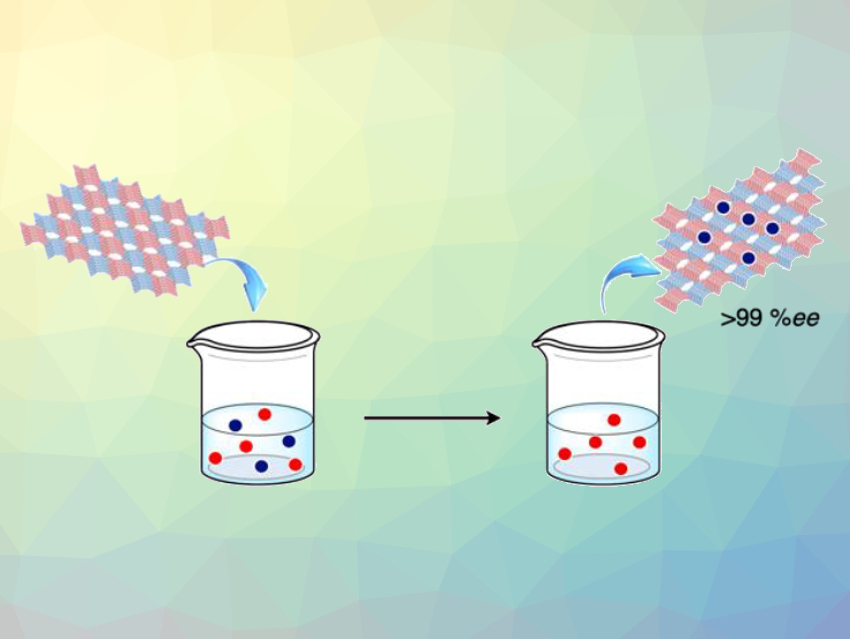Most porous 2D nanomaterials are achiral, and thus, their pores do not respond to chiral molecules. Chiral nanosheets are challenging to construct. However, such materials are desirable because they can be used for fast and efficient enantiomer separation.
Using a self-assembly process, Myongsoo Lee, Jilin University, Changchun, and Fudan University, Shanghai, both China, and colleagues have created single-layered, 2D porous sheets with two types of chiral void spaces. A plate-like aromatic amphiphile containing hydrophilic flexible chains (1, pictured below) was used. This compound forms stable 2D nanosheets in an aqueous methanol environment. The aromatic segments of 1 are stacked in a slip-and-tilt manner (pictured below) to form clusters. The clusters from sheets with an alternating “up” and “down” arrangement of the clusters (pictured in blue and red). This results in a chiral superstructure with a chiral environment in the pores.
The chiral sheets made from (S)-1 or (R)-1 selectively take up the L– or D-enantiomers, respectively, of a racemic tartrate derivative within minutes. They absorb the target enantiomer with greater than 99 % ee. According to the team, this work could be a basis for the construction of superfast separation materials with excellent enantiomer selectivity.

- Single-Layered Chiral Nanosheets with Dual Chiral Void Spaces for Highly Efficient Enantiomer Absorption,
Xiaopeng Feng, Bowen Shen, Bo Sun, Jehan Kim, Xin Liu, Myongsoo Lee,
Angew. Chem. Int. Ed. 2020.
https://doi.org/10.1002/anie.202003807


![Synthesis of [c2]Daisy Chains via Mechanochemistry](https://www.chemistryviews.org/wp-content/uploads/2025/04/202504_RotaxanesWithSolidStateMechanochemistry-125x94.png)

